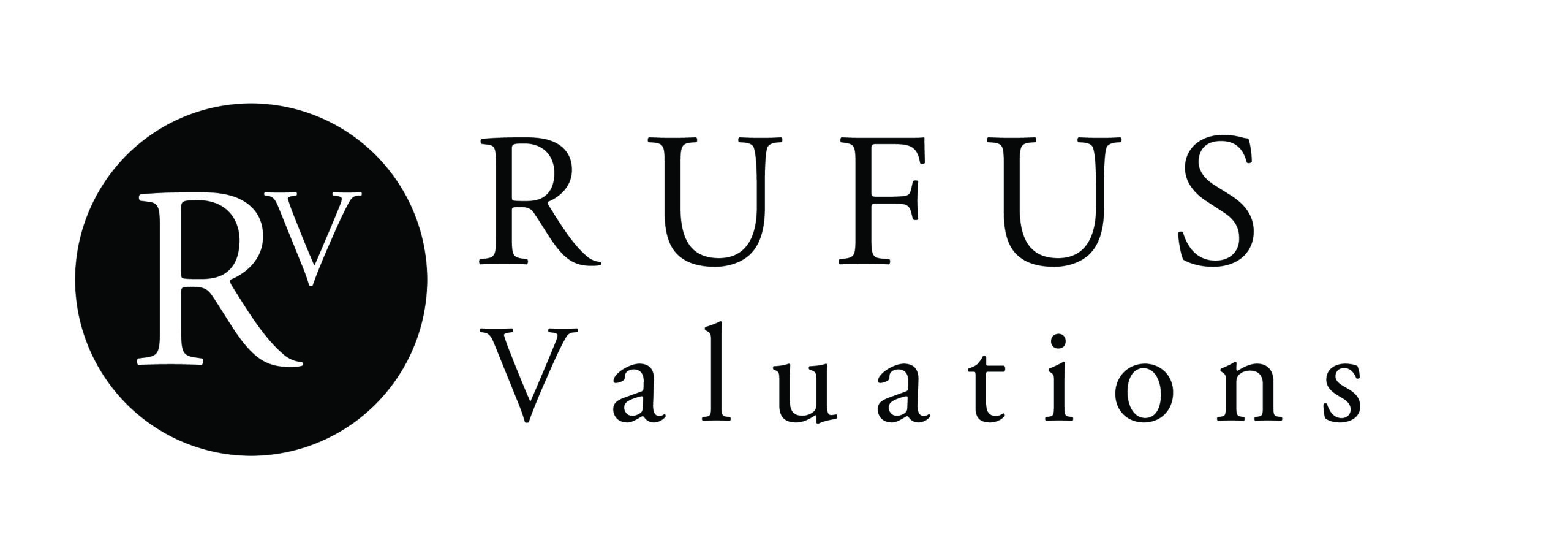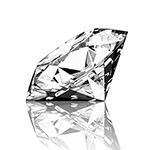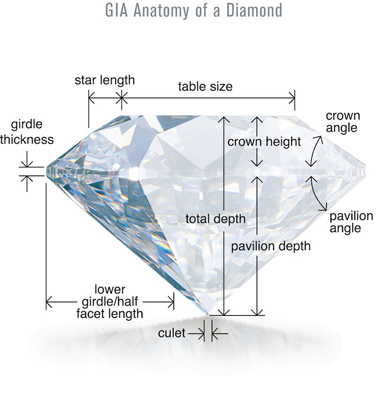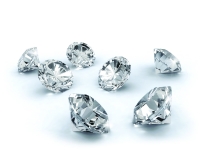This is admittedly only a very brief guide to how diamonds are graded, but it does provide useful information that helps explain the seemingly vast difference in diamond prices. Commonly known as the 4 Cs, the following attributes of a diamond are assessed and graded.
Cut
Cut is not only used to describe the shape and style of a diamond, but also to describe the way that it reflects light back out to the person viewing it. The most famous diamond cut is probably the round brilliant cut, which returns optimal brilliance and fire. Brilliance describes the brightness that appears to come from deep within the diamond, whereas fire refers to the rainbow flashes of colour as light is broken down into its spectral components. The proportions of a diamond greatly influence its cut and the sizes and angles of individual facets must all be considered.
Clarity
Clarity refers to any flaws the diamond may possess. Clarity can be broken down into two groups: inclusions – flaws within the stone, and blemishes – surface flaws. Clarity is assessed at 10x magnification using a jeweller’s loupe. Most people follow the Gemological Institute of America’s clarity grading scale which begins at F for flawless, and runs through IF (Internally Flawless), VVS (Very Very Slightly Included), VS (Very Slightly Included), SI (Slightly Included) to I for included. It is important to remember when buying that, without magnification as well as a great deal of experience, it is very difficult to see inclusions in the F to VS range.
Colour
Most diamonds display some yellow or brown tint which has the affect of absorbing light and dampening brilliance. Pure white diamonds are therefore more highly prized and again, a scale can be used to grade them. The GIA classes pure white diamonds as D colour and runs through the alphabet to Z colour which has a very yellow hue. Again, it is important to remember that the untrained eye only begins to detect the presence of colour at around H.
Carat
Carat is a unit of weight which derives from the carob seeds that were used to weigh diamonds in ancient times. There are five carats in one gram. All other factors being the same, the higher the carat weight of a diamond, the higher the price it will fetch. As carat weight increases, price increases exponentially. Premiums are paid as milestones are reached so, for example, a one carat stone will be considerably more expensive than a stone weighing 0.99 ct. This means that savings can be made by buying cleverly. Is anyone really going to know that the diamond in your ring weighs 0.01 ct less than the more expensive version in the jeweller’s window?!
If you have any diamonds which you would like valued, please contact us for further information.



